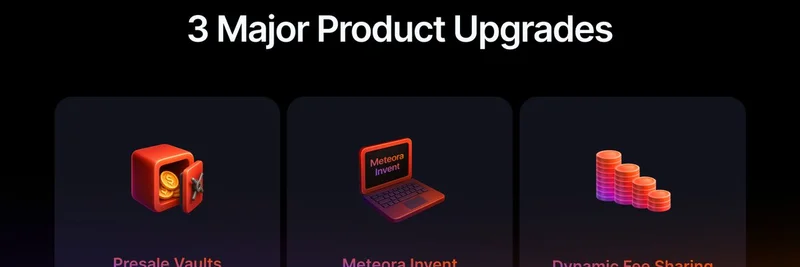Hey there, crypto enthusiasts! If you've been keeping an eye on the blockchain space, you might have caught wind of some big news from Kadena. The organization behind this proof-of-work blockchain just announced they're calling it quits on operations. But don't panic just yet—the network itself isn't going anywhere. Let's dive into what this means, especially for the meme token scene that's been bubbling up on Kadena.
The Announcement: Kadena Winds Down
It all started with a tweet from BSC News highlighting Kadena's decision to cease operations. According to the detailed report on BSC News, the company cited tough market conditions as the main culprit. Founded in 2019 by ex-SEC and JPMorgan folks Stuart Popejoy and William Martino, Kadena aimed to bring scalable, secure smart contracts to the masses, even building on tech from JPMorgan's own blockchain experiments.
Fast forward to now, and the native KDA token has taken a hit, dropping over 55% in a single day to around $0.092. That's a far cry from its all-time high above $27 back in 2021. The team expressed gratitude to the community in their official statement, noting that while business ops are halting, a small crew will stick around to help with the transition.
Why the Shutdown? Market Realities Bite
Crypto markets have been brutal lately, and Kadena isn't the first project to feel the squeeze. Unfavorable conditions—think prolonged bear markets, regulatory hurdles, and shifting investor interests—made it unsustainable to keep pushing for adoption. But here's the key twist: Kadena's blockchain isn't "owned" by the organization. It's designed to run decentralized, powered by miners and community governance. So, even without the central team, the show goes on.
For those new to the term, proof-of-work (PoW) is a consensus mechanism where miners use computing power to validate transactions and secure the network, similar to Bitcoin. Kadena's unique spin is its Chainweb architecture, which braids multiple chains together for better scalability without sacrificing security.
The Blockchain Lives On: Decentralization in Action
The good news? Smart contracts, miners, and token rewards aren't stopping. The network will keep chugging along independently. Over 566 million KDA tokens are still set to be distributed as mining rewards until 2139, and another 83.7 million will unlock by November 2029. Node operators (folks running the software that keeps the blockchain alive) are encouraged to update to the latest binary for smooth sailing.
This shift to full decentralization means the community takes the wheel. Protocol updates, maintenance, and governance will fall to independent developers and stakeholders. It's a true test of whether Kadena can thrive without its founding org, much like how Bitcoin operates today.
Meme Tokens on Kadena: Riding the Wave or Sinking Ship?
Now, let's talk about what Meme Insider cares about most—meme tokens. Kadena might not be the first chain that comes to mind for memes, but it's got a growing ecosystem. Projects like Kishu Ken, billing itself as the first memecoin on the first blockchain to solve the trilemma (that's scalability, security, and decentralization, for the uninitiated), and Heron Heroes, a unique meme token built right on Kadena, show there's fun to be had here.
From Reddit discussions, memecoins have become a staple in Web3, and Kadena's PoW setup offers a solid foundation for them. Coins like $KISHK have built strong, fun communities, proving that even on a more "serious" chain, memes can thrive.
But with the shutdown, what happens? These tokens rely on the underlying blockchain, which is staying online. Miners will continue earning rewards, and smart contracts (self-executing code on the blockchain) remain independent. However, without active promotion from the Kadena team, adoption might slow. Community sentiment is mixed—some holders feel betrayed, with losses over 90%, as shared in X posts. Others see it as a chance for true decentralization to shine.
Implications for Investors, Miners, and Devs
If you're holding KDA or meme tokens on Kadena, the network's decentralization is your safety net. Prices might fluctuate wildly in the short term—KDA's already down big—but long-term, it depends on community buy-in. Miners can keep going, earning those scheduled rewards. Developers? You'll handle your own protocols, which could lead to innovation or stagnation, depending on participation.
For meme token creators and holders, this could be a double-edged sword. On one hand, lower visibility without company backing. On the other, Kadena's tech advantages—like cheap transactions and high throughput—could attract more builders fleeing crowded chains like Solana or Ethereum.
One long-time holder, La Phu, vented on X about feeling abandoned, especially after exchanges labeled KDA as "Suspended." It's a reminder that crypto is volatile, and even established projects can pivot dramatically.
Looking Ahead: Opportunities in the Chaos
Kadena's exit from the scene underscores a broader trend in crypto: survival of the fittest, or rather, the most decentralized. For meme tokens, this could open doors for community-driven revivals. If you're a blockchain practitioner, keep an eye on how governance evolves here—it might offer lessons for your own projects.
At Meme Insider, we're all about staying ahead in the meme and crypto game. If Kadena's ecosystem sparks new meme innovations, we'll be here to cover it. What do you think—bullish on decentralized memes, or time to look elsewhere? Drop your thoughts in the comments!

